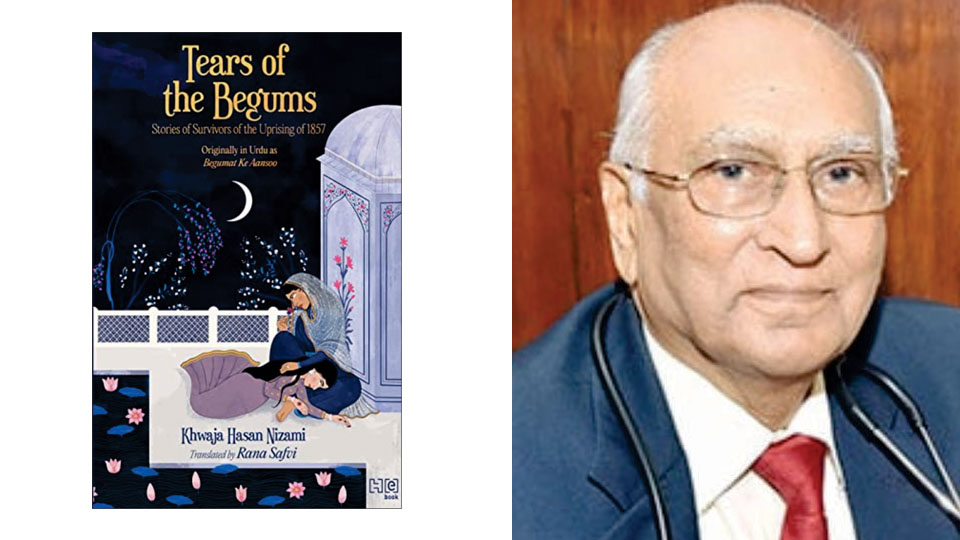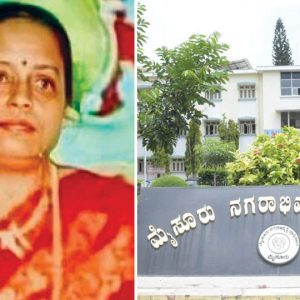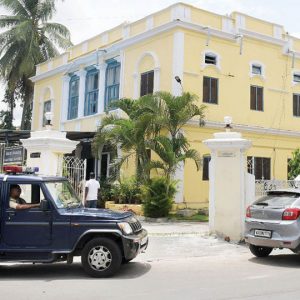When Nobles became non-entities, Princes became paupers and Begums were reduced to beggars…
By Dr. C.D. Sreenivasa Murthy
- Title: Tears of the Begums: Stories of Survivors of the Uprising of 1857 (Originally in Urdu as ‘Begumat Ke Aansoo’)
- Author: Khwaja Hasan Nizami
- Publisher: Hachette India
- Year of Publication : 1922
- Translator : Ms. Rana Safvi (2022)
- Pages: 212+xii
- Price: Rs. 499
The Sepoy Mutiny (or the First War of Independence as we call it) started in 1857, over the issue of the greasing of the cartridges used in the guns of Indian soldiers of the East India Company army. It was known by the Urdu word “Ghadar” meaning rebellion or revolt.
The rebellion spread rapidly in North India particularly around Lucknow and Delhi. The rebellious soldiers killed a large number of British officers, women and children. They adopted as their leader the surviving Mughal emperor Bahadur Shah Zafar without his consent. He was only a namesake Emperor who was on a generous pension given by the East India Company, and did not have any power beyond the precincts of the Red Fort, nor had the money to help the soldiers. He was reluctant to take on the British army but was helpless and had to go with the demands of rebellious soldiers.
Though initially the British had a setback, they quickly regrouped and took over Delhi. The Red Fort had about 3,000 royal families all of whom were descendants of the present and past emperors. The emperor’s court life was filled with pomp and grandeur, though he had no real authority.
Bahadur Shah himself was a refined and gentle soul and a poet. Delhi was ruled by the English Resident. The lives of the royals living in the “Lal Qila” was lavish with big mansions, large number of servants and slaves. Ghadar was a watershed moment in Indian history and the grand and elegant Mughal culture ended suddenly and dramatically.
Kulsum Zamani Begum was the beloved daughter of the last emperor Bahadur Shah. On the night he left the fort, he sent her and her family away entrusting them to the care of Khuda (God). Within a few days of leaving the Red Fort they were looted of all their money, jewels and even their expensive clothes. Finally on the way some villagers give them shelter in a thatched hut. The company soldiers were looking for the emperor’s descendants to arrest and punish. They escaped to Hyderabad, where they were given shelter by Nawab Lashkar Jung, who had given shelter to many Mughal royals who had escaped from Delhi.
In a few years the British had their way and the Princess was advised to leave Hyderabad. Some of the well-wishers of the Mughals arranged for her to travel to Mecca. One of the slaves she had freed while she was the Princess in Delhi had migrated to Mecca and had become an extremely wealthy merchant there. He looked after her very well and made her family stay comfortable.
The Ambassador of Turkey learnt that the Emperor’s daughter had taken refuge in Mecca and arranged a pension for her from the Sultan of Turkey. She lived comfortably in Mecca for a number of years. Ultimately she longed to return to her beloved Delhi. When she went back to Delhi, the English Governor out of compassion, arranged a pension for her family. The British who had taken away her dad’s empire, gave her in return a grand compensation of ten rupees a month.
Sakina Khanum was the daughter-in-law of Nawab Faulad Khan. Nawab died while fighting the company soldiers during the Ghadar. When his body was brought home by the soldiers, Sakina was writhing in severe labour pains. The Nawabs’ son had died four days earlier in the war, and his wife had passed away two years ago. Sakina delivered a boy with the help of the servants, while the corpse of the Nawab was lying in the front yard, without even a shroud. She had to run away from their mansion at midnight, taking a few jewels, some cash which was in the house and her new-born baby. The four maids who were in the house went with her.
After a few days, the maids stole all the money and jewels and deserted her. They even took away the new-born son of the Princess. She tried to eke out a living by working as a maid in households. Unfortunately for her, she had no skills needed for domestic help. After all she was the daughter-in-law of a Nawab and had lived in luxury with many servants and slaves at her command. She was frequently thrown out of many homes where she worked, as she could not work hard enough.
Finally, the Princess became a beggar for her living. After a few years, one afternoon she was begging in front of a wedding house. She was exhausted due to the hot summer sun. She had not eaten for many days and was extremely hungry. As she was begging, one young handsome boy came out of the wedding hall. Hearing her wails, he sat in front of her and gave her the food he was carrying for himself. The boy spoke to the beggar and consoled her and told that his mother was a maid in the wedding house.
As he was speaking with her, his mother came out and Sakina immediately recognised her as her maid who had deserted her and realised that the boy who fed her was her own son. After many years Sakina the beggar Princess had been reunited with her long lost son.
Qismat Baig worked as a chef at the palatial Taj Mahal hotel in Bombay. He was a recluse and an irascible and difficult man. None knew his antecedents. Whenever asked about himself he would answer that he was a Badshah and walk away. The Maharaja of Bhavnagar would frequently stay at the Taj Mahal Hotel whenever he was in Bombay, and he immensely enjoyed the food cooked by Qismat Baig.
One day the Maharaja expressed his desire to meet the chef. Qismat Baig, who never liked to meet anyone, was persuaded to visit him. When the king asked Qismat Baig as to who he was, Baig gave a long philosophical discourse. Surprised at the erudition of the chef, the king persuaded him to tell his story. Baig started recounting his long sad story. He was the son of the last Mughal Emperor Bahadur Shah born to a slave girl. He was named Timur Shah after the great ancestor of the Mughals. The emperor had provided well for him and his mother and they lived comfortably in luxury with servants and maids. As a young boy he was well educated and would often visit a Dargah near his home in the evenings and had imbibed Sufi mysticism and Dervish practices.
When Ghadar started, his mother lost everything. He worked as an assistant to a cook and learnt the culinary art. Misfortune always haunted him. He lost his mother, wife and children to illnesses and became alone in the world. Living in Delhi made him very sad and migrated to Bombay where Timur Shah changed his name to Qismat Baig, a man of destiny. The son of the Mughal Emperor had become a Bawarchi (chef) in a hotel.
These are some of the poignant real-life stories in the book “Tears of the Begums”. Khwaja Hasan Nizami was a young man at the time of Mutiny. In later years he became a writer. He personally interviewed many survivors of nobility and recorded their tragic stories. It was published as a book “Begumat Ke Aansoo” in 1922. Ghadar was a cataclysmic event in the narrative of India. It ended the centuries of pomp of the Mughal Court and the wealthy refined and elegant lives of the aristocracy. Nobles became non-entities, Princes became paupers and Begums were reduced to beggars. The sad stories in the book bring “Aansoo” to the eyes of the readers.








Recent Comments